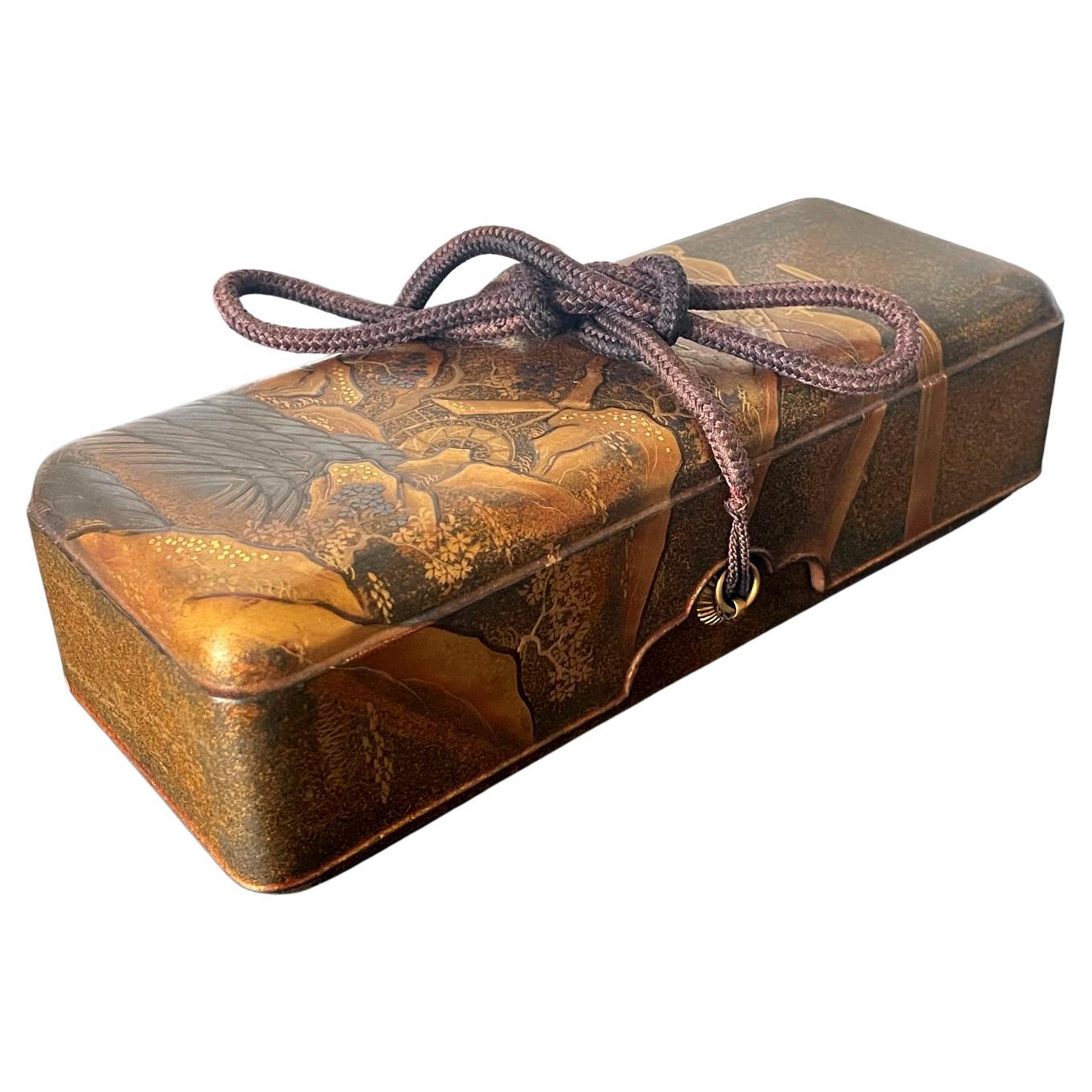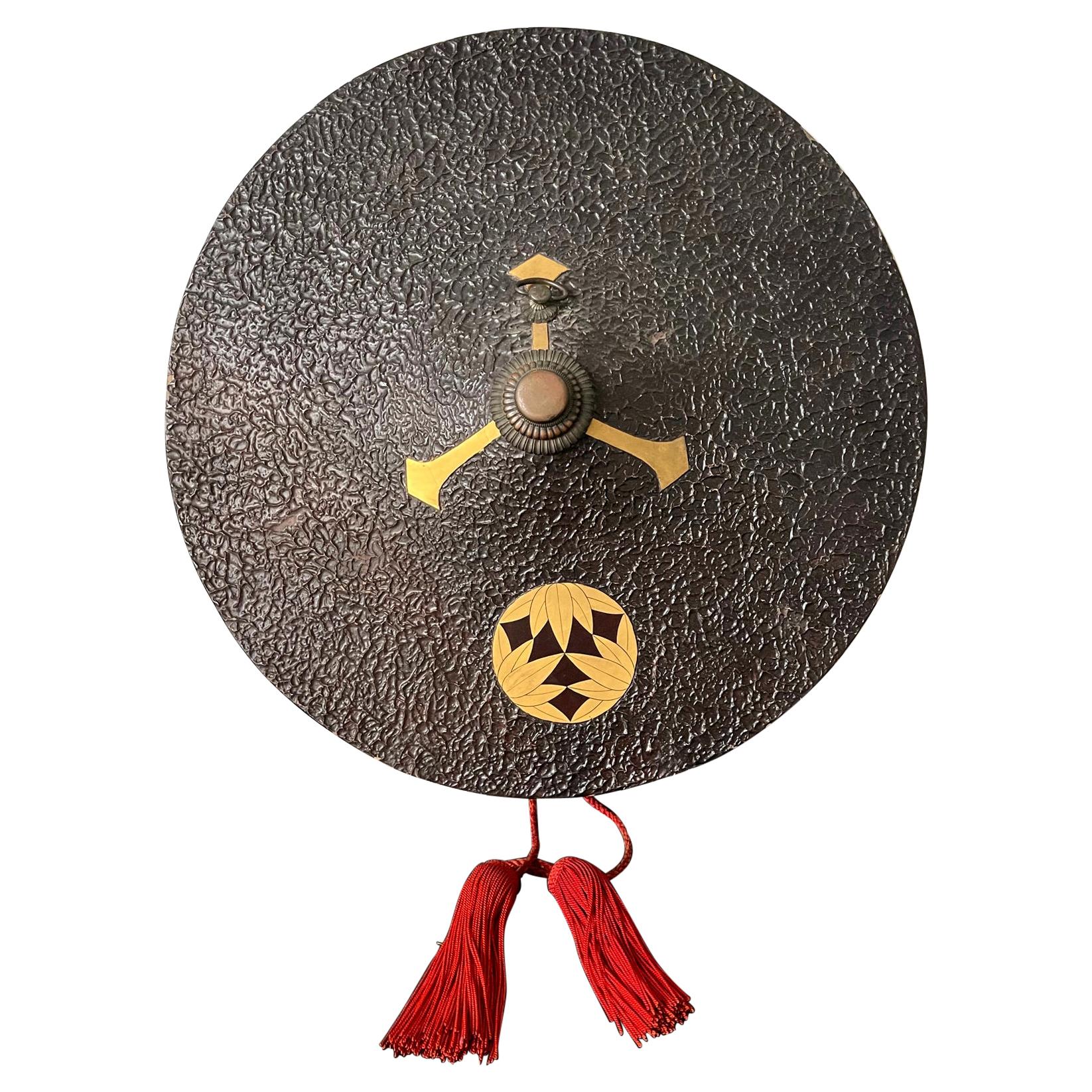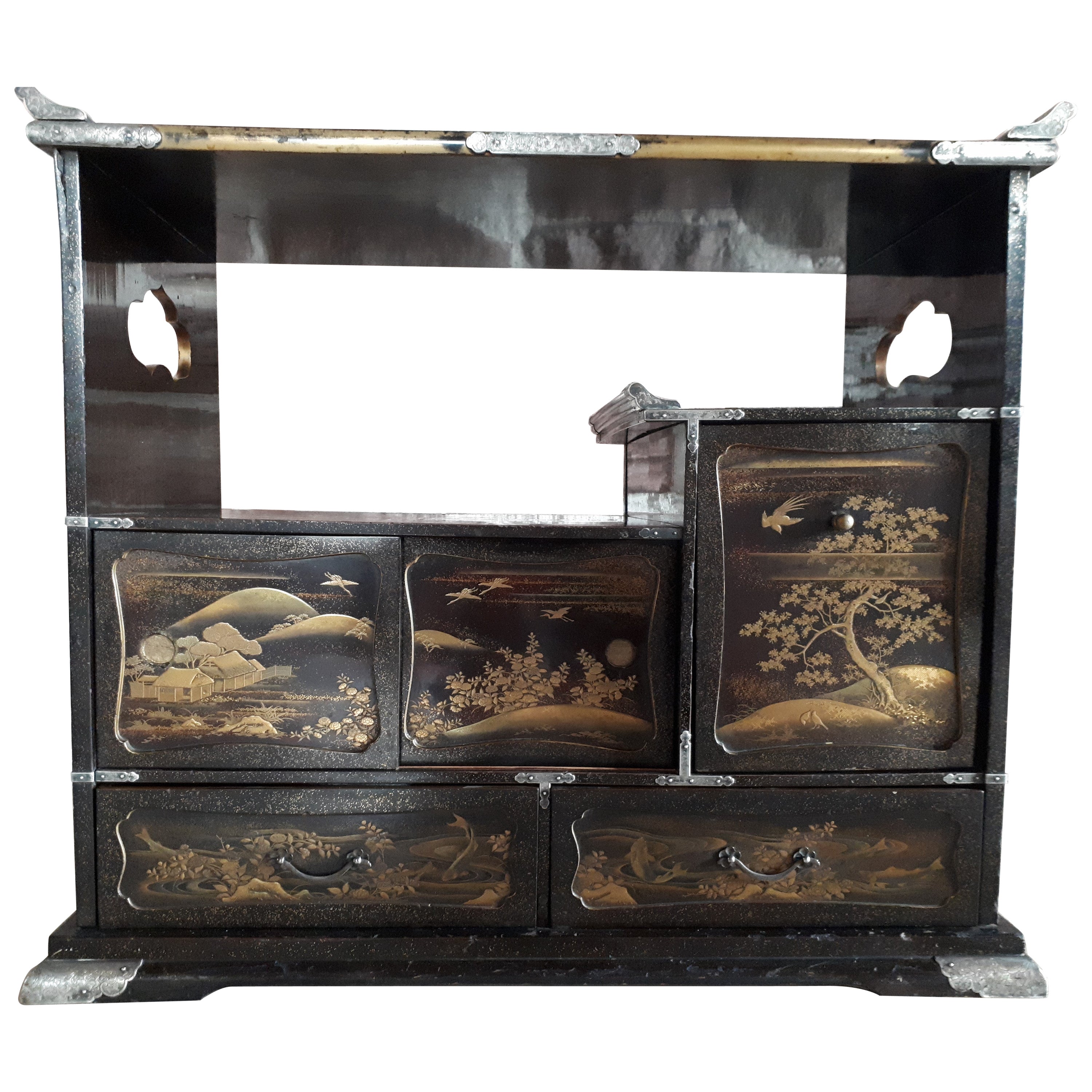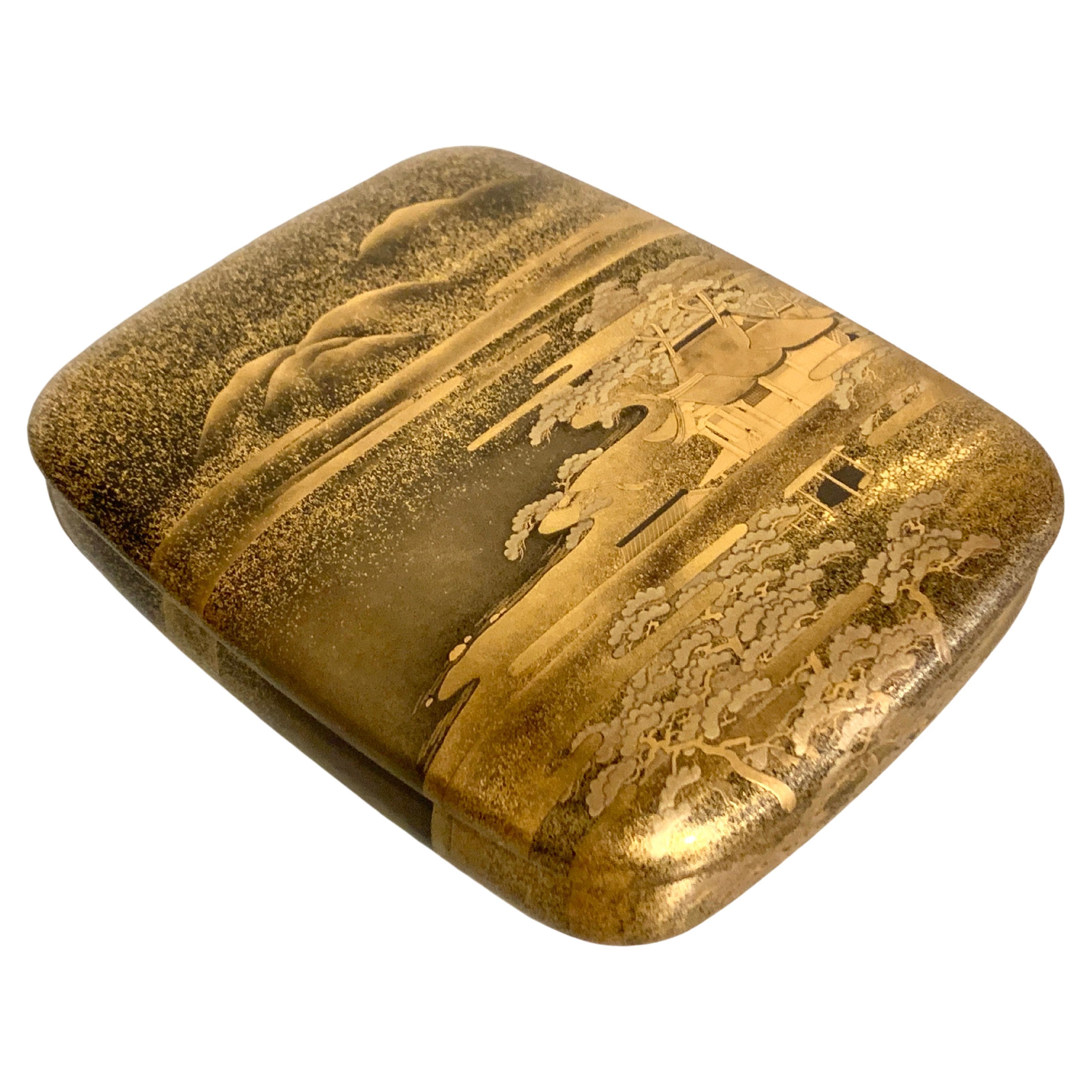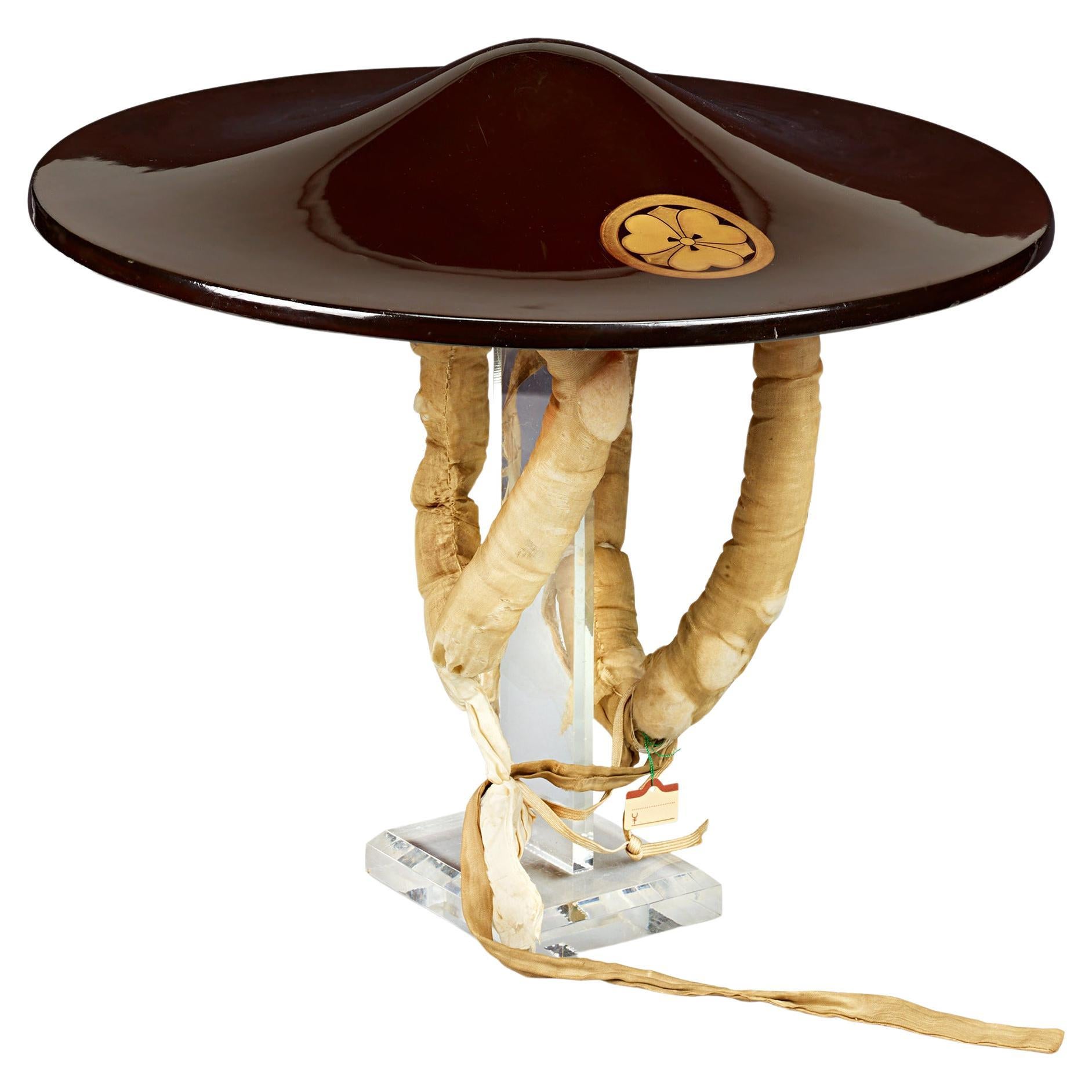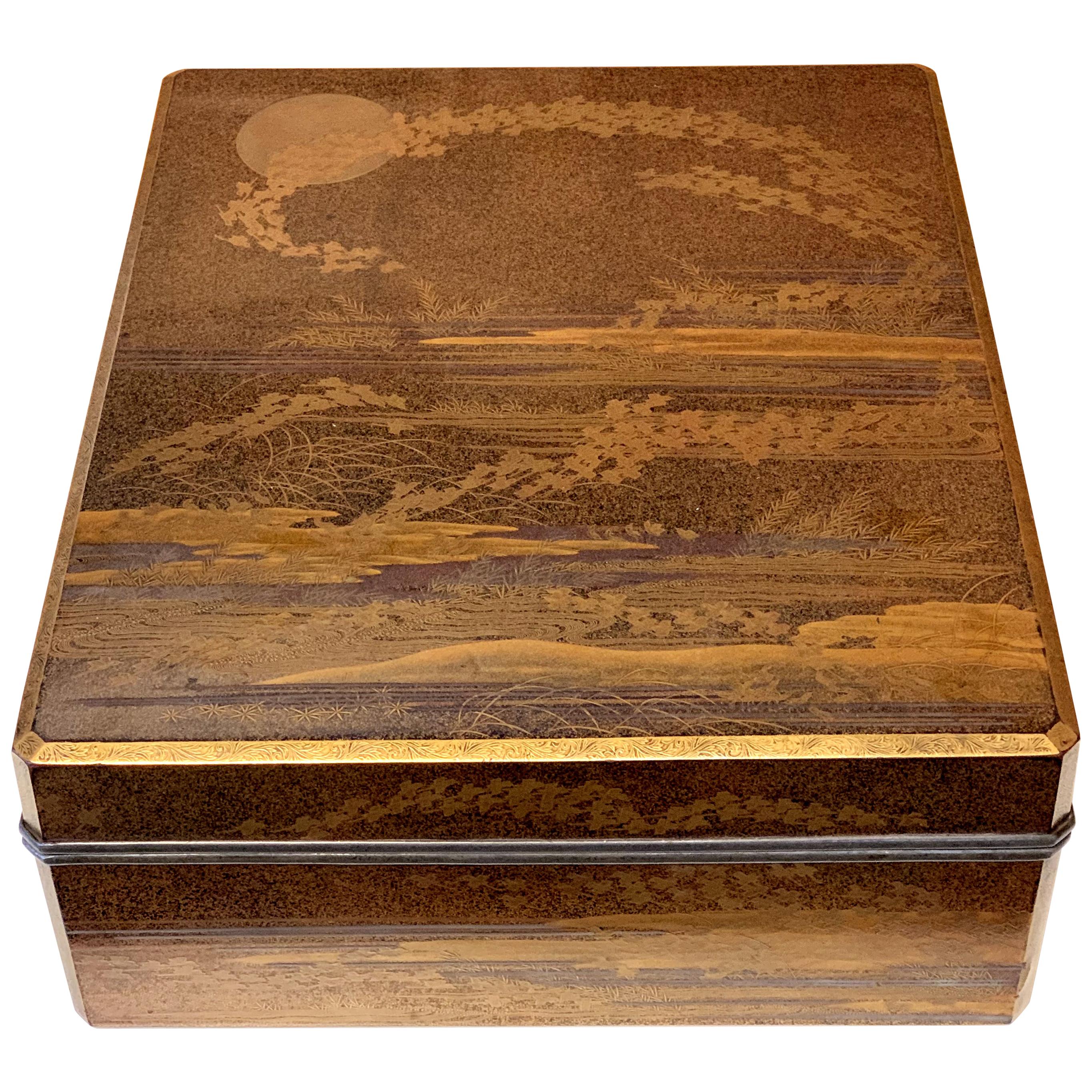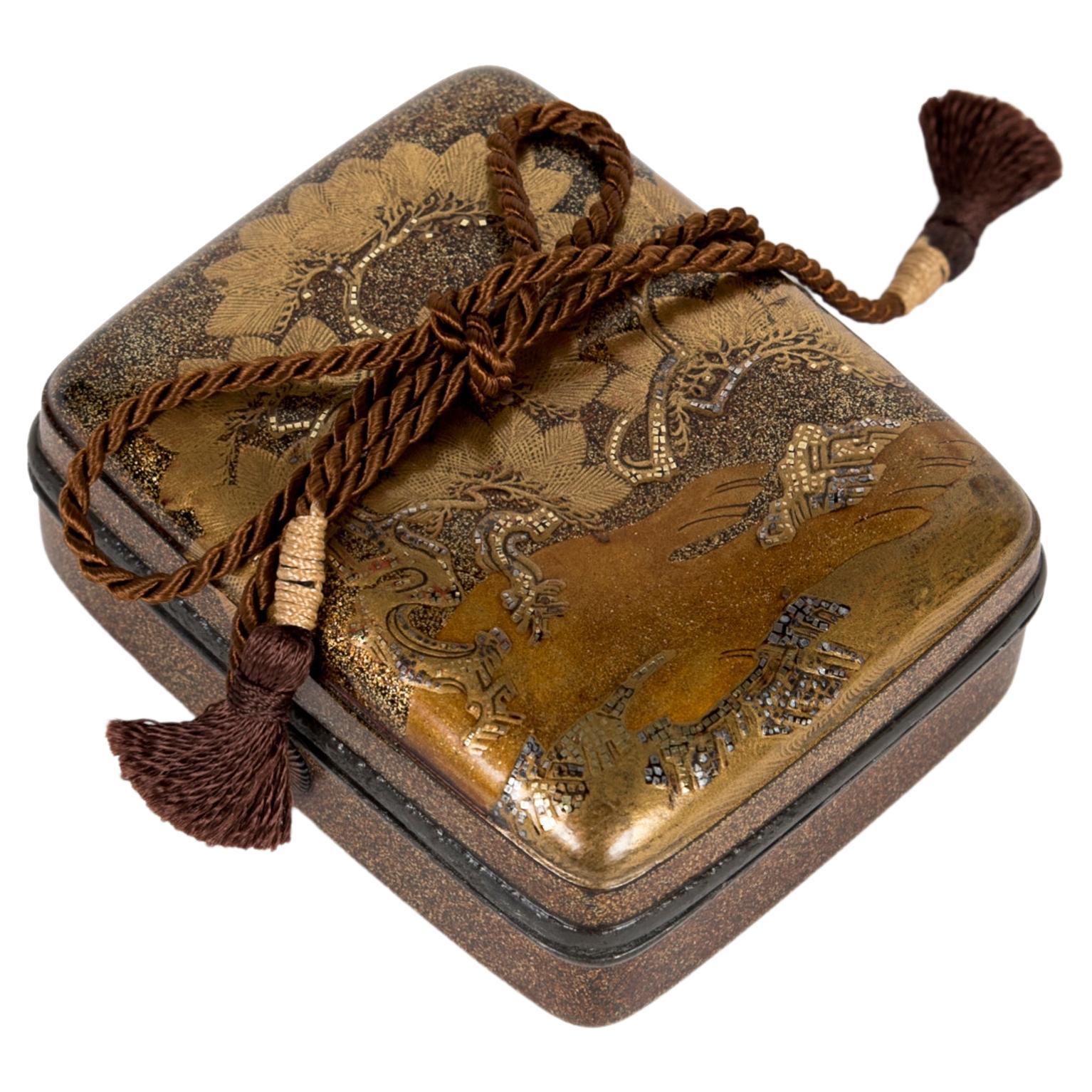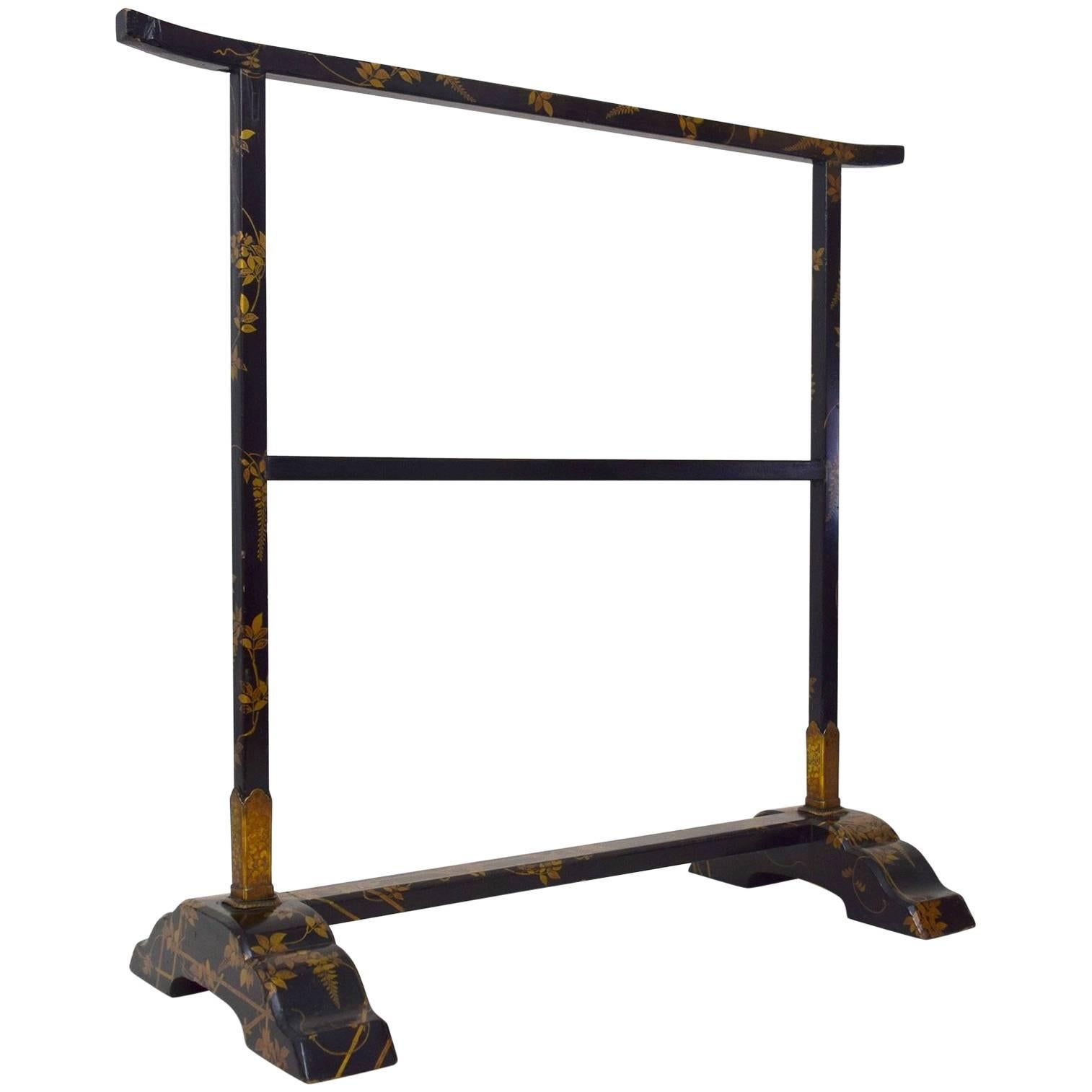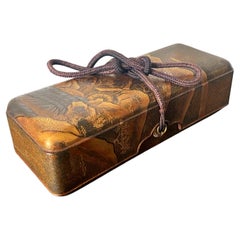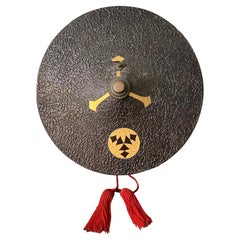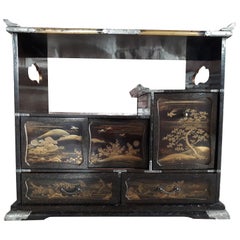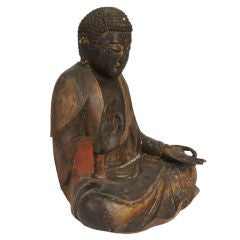
Japanese Edo Period Lacquered Pine Seated Amida Buddha
View Similar Items
1 of 10
Japanese Edo Period Lacquered Pine Seated Amida Buddha
About the Item
- Dimensions:Height: 15 in (38.1 cm)Width: 13 in (33.02 cm)
- Place of Origin:
- Period:
- Date of Manufacture:17th century
- Condition:Age appropriate wear. Please contact dealer for detailed condition report.
- Seller Location:Denver, CO
- Reference Number:Seller: L-23-00091stDibs: U1201259055101
You May Also Like
- Japanese Lacquered Maki-e Fubako Edo PeriodLocated in Atlanta, GAA Japanese lacquered wood fubako (a box used to store document or small scroll painting), circa second half of 19th century late Edo period. The rectangular box features an unusually deep lipped lid with slightly rounded corners, a conforming lower box that is almost entirely covered by the lid which has two bronze medallion rings with tasseled...Category
Antique 19th Century Japanese Edo Lacquer
MaterialsWood, Lacquer
- Japanese Lacquered Samurai Jingasa Hat Edo PeriodLocated in Atlanta, GAA bespoken Japanese historical hat known as Jinggasa (militant hat) that was worn by samurai in Edo period (1603-1868) circa 18-19th century. There were several subtypes of Jingasa a...Category
Antique 19th Century Japanese Japonisme Lacquer
MaterialsWood, Lacquer
- Small Lacquered Japanese Kazaridana Cabinet, Edo PeriodLocated in Saverne, Grand EstPrecious and rare small kazaridana lacquered on all sides with two drawers and three panels decorated with fish, landscapes and birds. The removable panel reveals a locker with a sma...Category
Antique Late 19th Century Japanese Meiji Lacquer
MaterialsWood
- Japanese Lacquer Stationery Box, Suzuribako, Edo Period, 19th c, JapanLocated in Austin, TXA fine and elegant Japanese lacquer box for writing implements or stationery, suzuribako, with an image of a Shinto shrine, Edo Period, mid-19th century, circa 1840, Japan. The exqu...Category
Antique Mid-19th Century Japanese Edo Lacquer
MaterialsGold Leaf
- Large Japanese Lacquer Document Box, Ryoshibako, Edo/Meiji period, JapanLocated in Austin, TXA large and magnificently decorated Japanese lacquer document box, ryoshibako, signed Umeboshi/Baikyo, late Edo or early Meiji Period, mid 19th century, Japan. The large document box, ryoshibako, of tall, rectangular shape with rounded corners, and fitted with an inrobuta (flush-fitting) cover with beveled edges. The exterior of this exquisite box is decorated all over with fifteen different raised reserves shaped as uchiwa (paddle) fans against a lush and intricate krikane ground imitating shagreen. The uchiwa shaped reserves all of takamaki-e, and exquisitely painted with designs of animals, flowers, and landscapes in silver, gold, maki-e, hiramaki-e, and takamaki-e, with kirikane, nashiji, and polychrome embellishments, upon gold lacquer fudame grounds. The interior of the lid is nothing short of spectacular, featuring a large design of a magnificent and beautifully detailed rooster and hen with chicks gathered around a lazy stream. Large stalks of chrysanthemum bloom behind them. All against an ethereal nashiji ground. The cover of the box features five reserves: 1. Three minogame (turtles with long tails), symbolizing longevity 2. "Narihira Crossing the Sumida" from The Tales of Ise...Category
Antique 1860s Japanese Meiji Lacquer
MaterialsSoftwood, Lacquer
- Edo-Period Lacquered JingasaLocated in New Orleans, LAComplete with a lacquered surface and original silk straps, this Japanese Edo-period traveling hat, or jingasa, first emerged during the illustrious period between 1603 and 1868, a t...Category
Antique 19th Century Asian Edo Lacquer
MaterialsSilk
Recently Viewed
View AllMore Ways To Browse
Ivory Plaque
17th Century Seated Buddha
Edo Calligraphy
Japanese Lacquer Plaque
Amida Buddha
Japanese Ivory Figure
Japanese Inlaid Plaque
Chased Gold
Fifty Furniture
Hand Carved Wooden Sculptures
Revival Bronze
Flower Study Sculpture
Antique Open Sign
Deco Woman
Foundry Sign
Antique Earth
Baroque Italian 18th Century
Jean Produce
